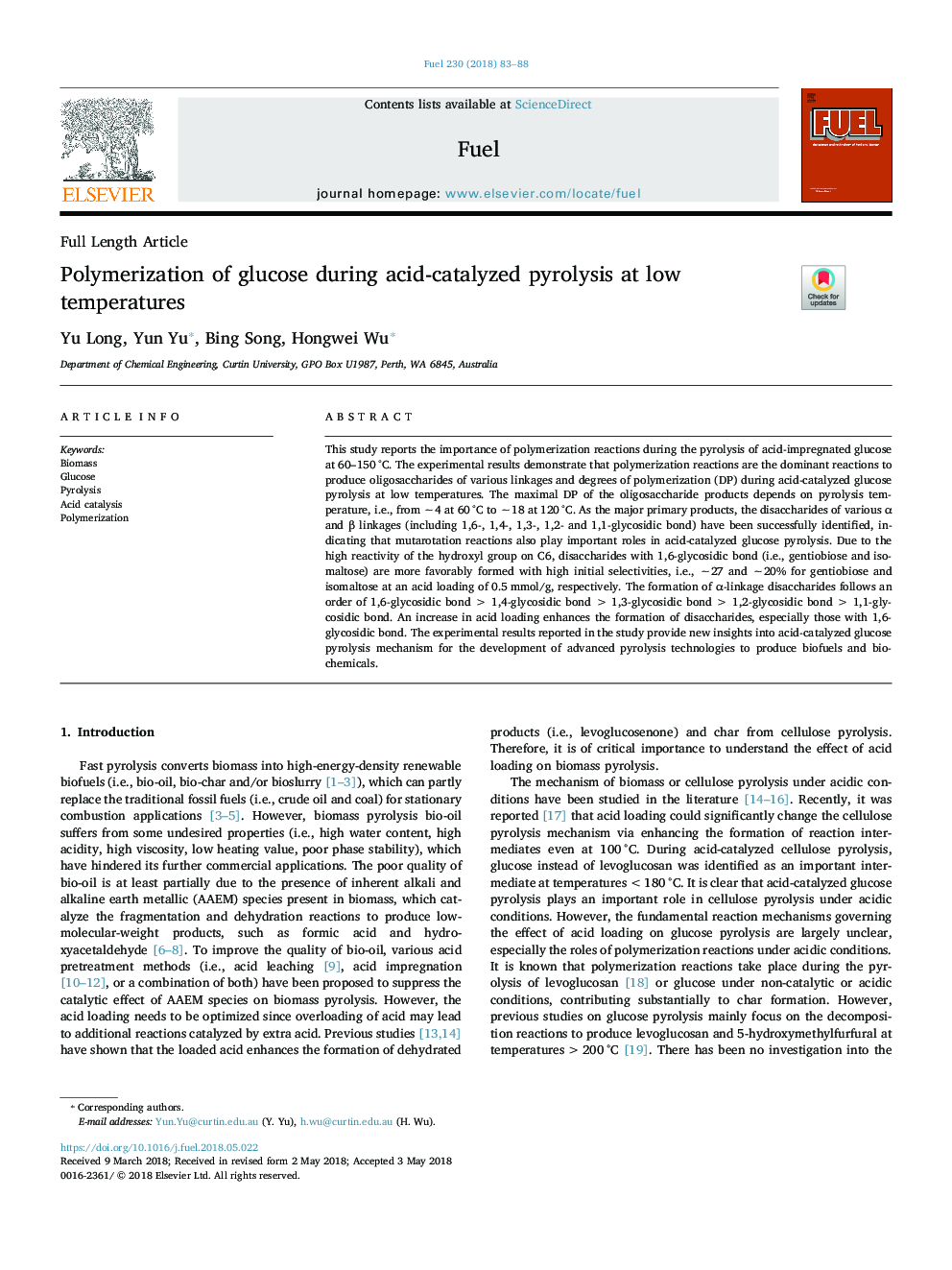| Article ID | Journal | Published Year | Pages | File Type |
|---|---|---|---|---|
| 6630607 | Fuel | 2018 | 6 Pages |
Abstract
This study reports the importance of polymerization reactions during the pyrolysis of acid-impregnated glucose at 60-150â¯Â°C. The experimental results demonstrate that polymerization reactions are the dominant reactions to produce oligosaccharides of various linkages and degrees of polymerization (DP) during acid-catalyzed glucose pyrolysis at low temperatures. The maximal DP of the oligosaccharide products depends on pyrolysis temperature, i.e., from â¼4 at 60â¯Â°C to â¼18 at 120â¯Â°C. As the major primary products, the disaccharides of various α and β linkages (including 1,6-, 1,4-, 1,3-, 1,2- and 1,1-glycosidic bond) have been successfully identified, indicating that mutarotation reactions also play important roles in acid-catalyzed glucose pyrolysis. Due to the high reactivity of the hydroxyl group on C6, disaccharides with 1,6-glycosidic bond (i.e., gentiobiose and isomaltose) are more favorably formed with high initial selectivities, i.e., â¼27 and â¼20% for gentiobiose and isomaltose at an acid loading of 0.5â¯mmol/g, respectively. The formation of α-linkage disaccharides follows an order of 1,6-glycosidic bondâ¯>â¯1,4-glycosidic bondâ¯>â¯1,3-glycosidic bondâ¯>â¯1,2-glycosidic bondâ¯>â¯1,1-glycosidic bond. An increase in acid loading enhances the formation of disaccharides, especially those with 1,6-glycosidic bond. The experimental results reported in the study provide new insights into acid-catalyzed glucose pyrolysis mechanism for the development of advanced pyrolysis technologies to produce biofuels and biochemicals.
Related Topics
Physical Sciences and Engineering
Chemical Engineering
Chemical Engineering (General)
Authors
Yu Long, Yun Yu, Bing Song, Hongwei Wu,
